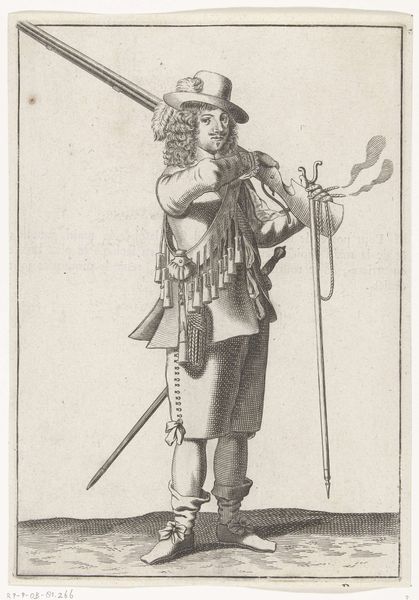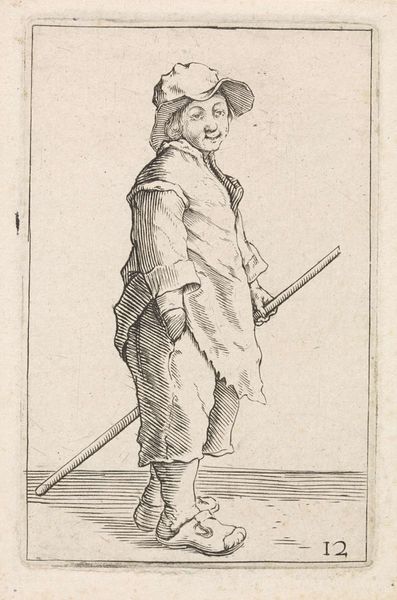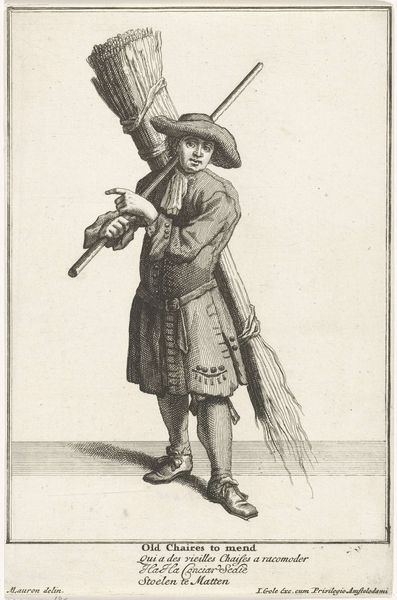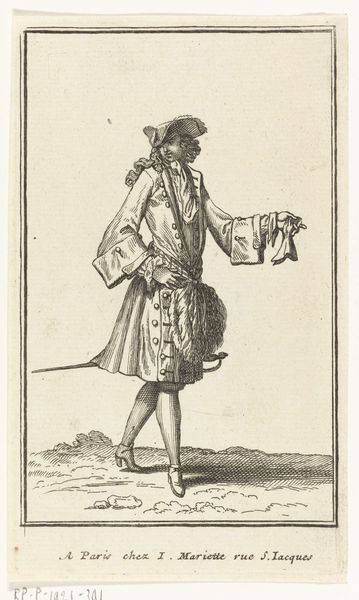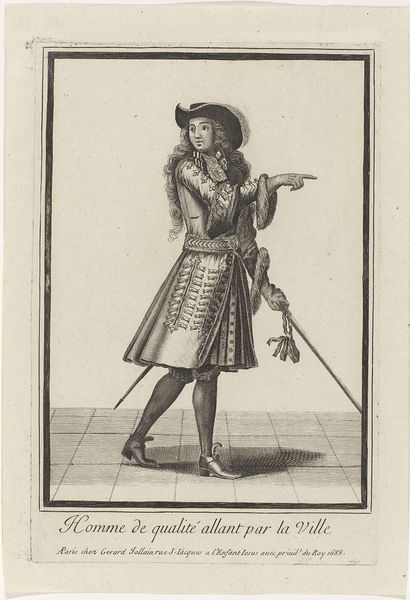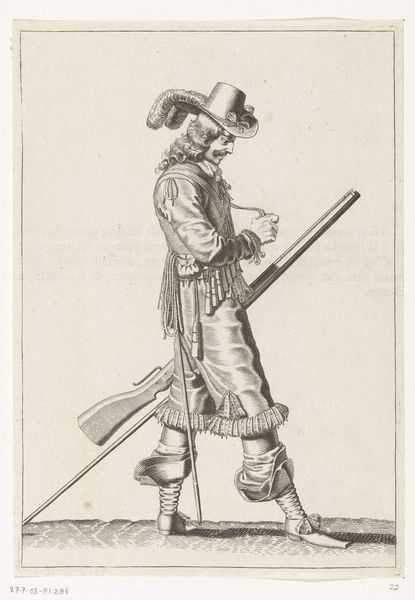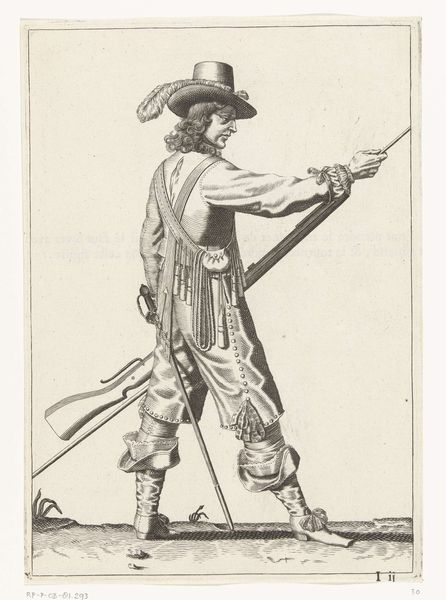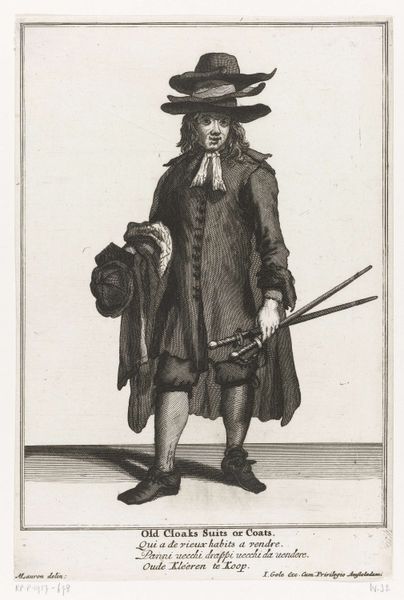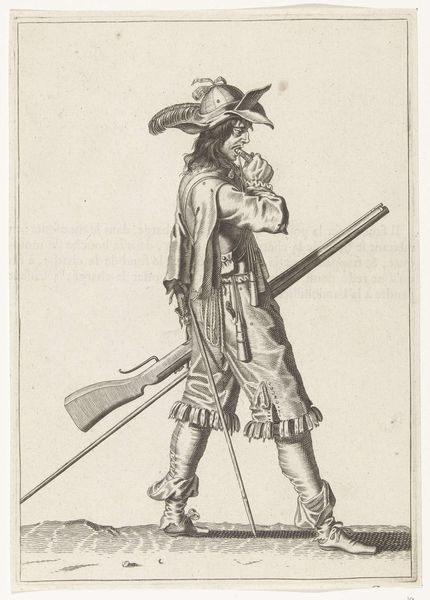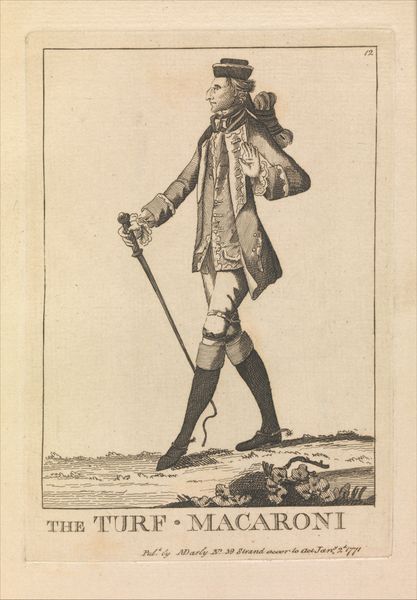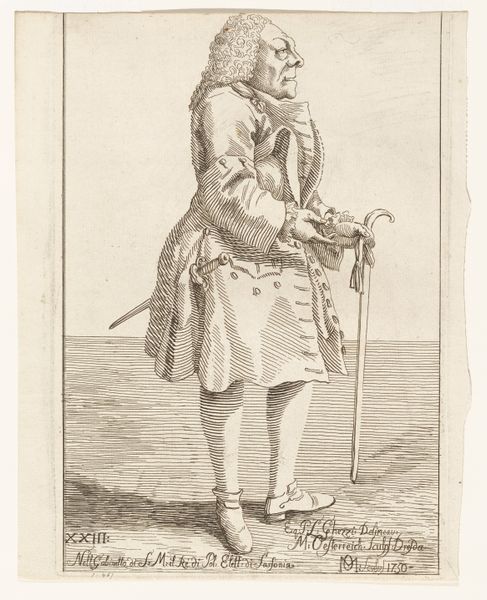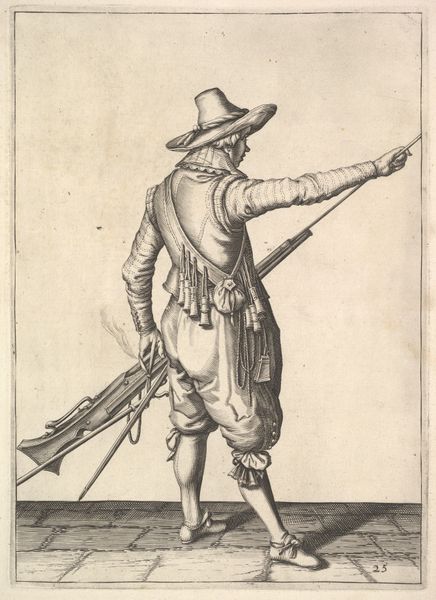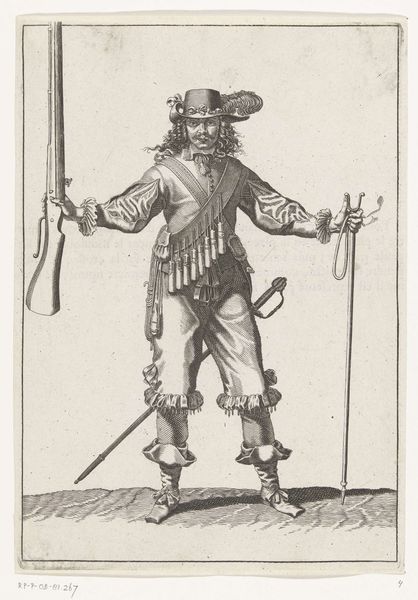
print, engraving
#
portrait
#
baroque
# print
#
pencil sketch
#
old engraving style
#
figuration
#
pen-ink sketch
#
line
#
engraving
Dimensions: height 120 mm, width 72 mm
Copyright: Rijks Museum: Open Domain
Editor: Here we have "Man with a Sword at his Side," an engraving by Bernard Picart from 1696. I’m immediately drawn to the fine lines and how they define the textures of the clothing. It looks so detailed for a print. How would you interpret this work? Curator: This engraving is a fascinating example of the democratization of art through printmaking. Consider the socio-economic context: this wasn't a unique, hand-painted portrait for the elite. Instead, the engraving process allowed for multiple, relatively inexpensive reproductions. Editor: So, you’re saying the value is in its accessibility rather than just its aesthetic quality? Curator: Precisely. The material process is key. Engraving requires skilled labor, a craftsman meticulously carving lines into a metal plate. Each strike of the burin, each etched line represents time and effort. This labor, usually hidden, is made visible through the final printed product. It challenges our conventional view of art by drawing attention to the means of production, to the materiality of the image itself. And then, how might this availability shape the perception of the depicted man? Editor: That makes me wonder, was Picart perhaps trying to subvert the traditional portrait? To give access to an image to those who would not be able to see it? Curator: It is interesting to consider it. It does seem the act of engraving itself levels the playing field, disrupting traditional notions of artistic value linked to unique, handcrafted objects. It provides food for thought. Editor: I hadn't thought about the social implications of the printmaking process itself. Thank you! Curator: My pleasure. The beauty often lies within the overlooked labor and socio-historical context.
Comments
No comments
Be the first to comment and join the conversation on the ultimate creative platform.

